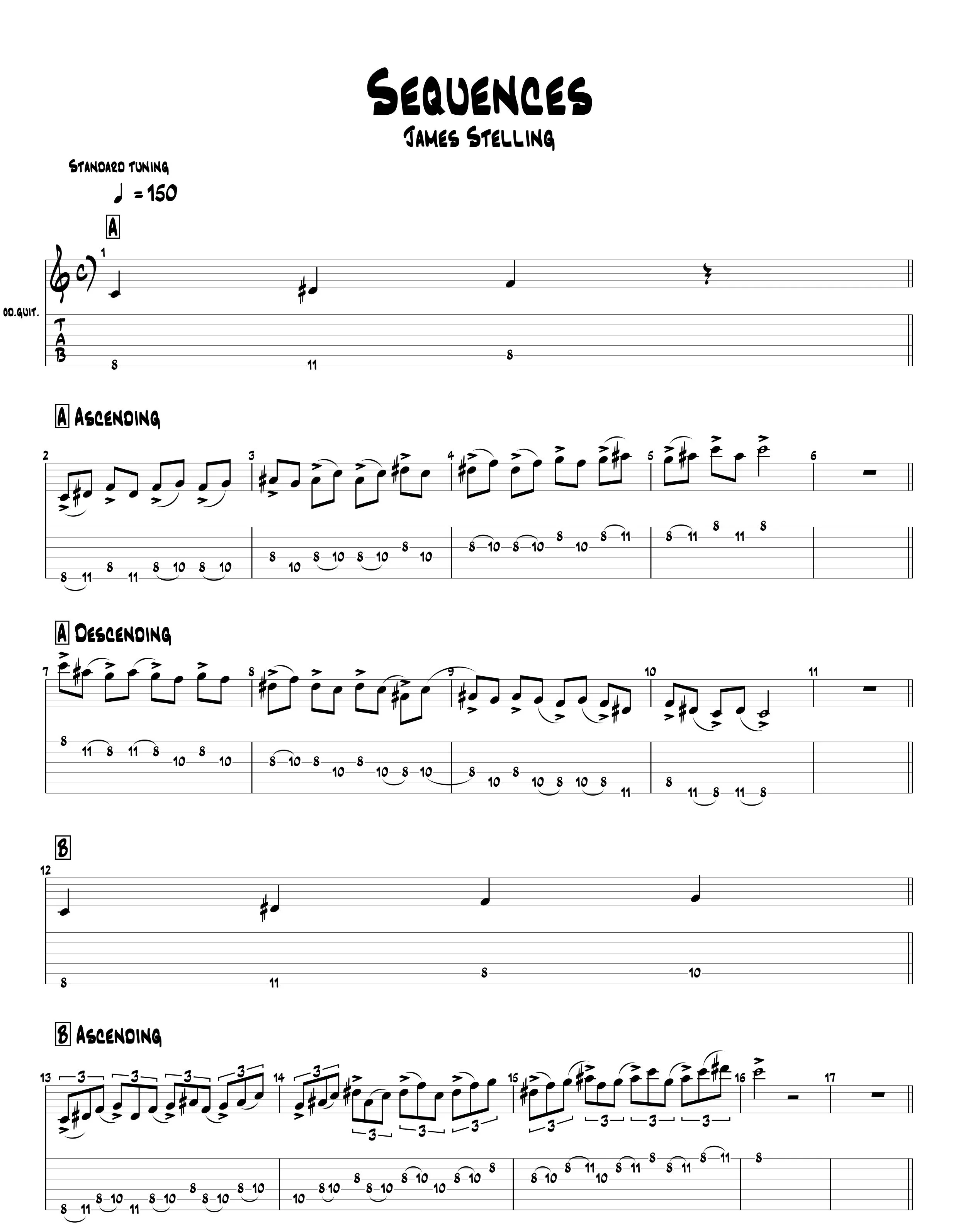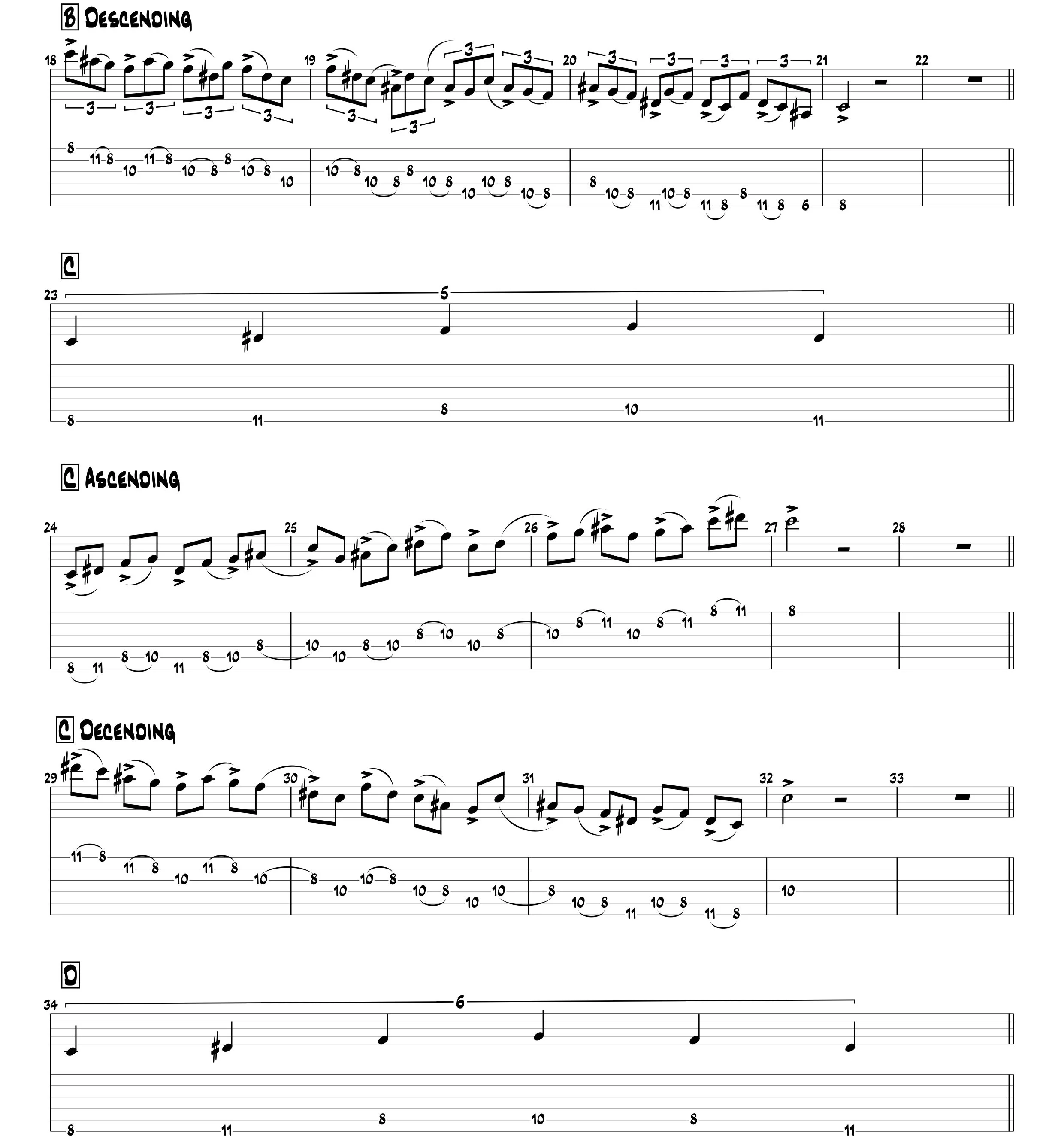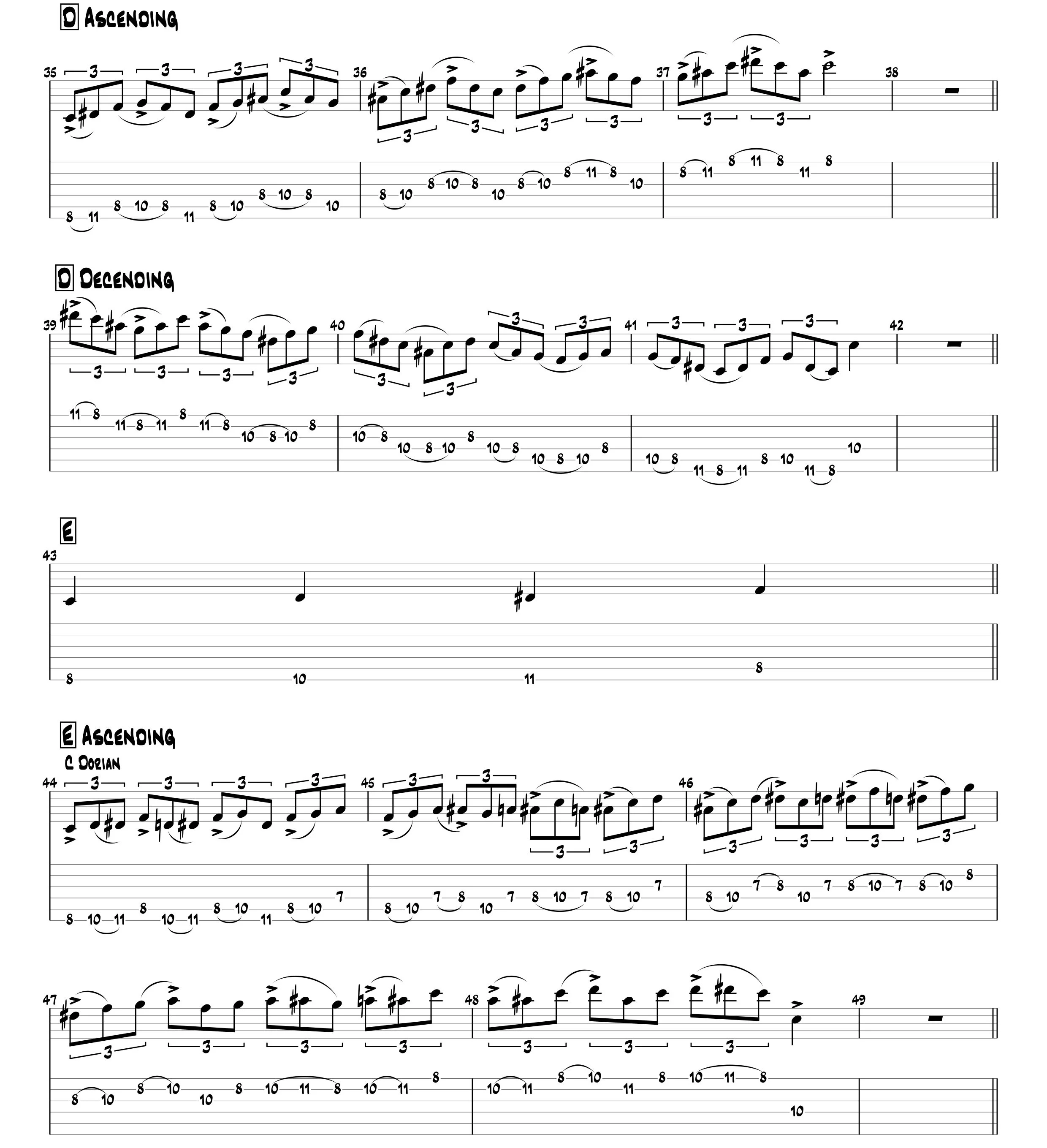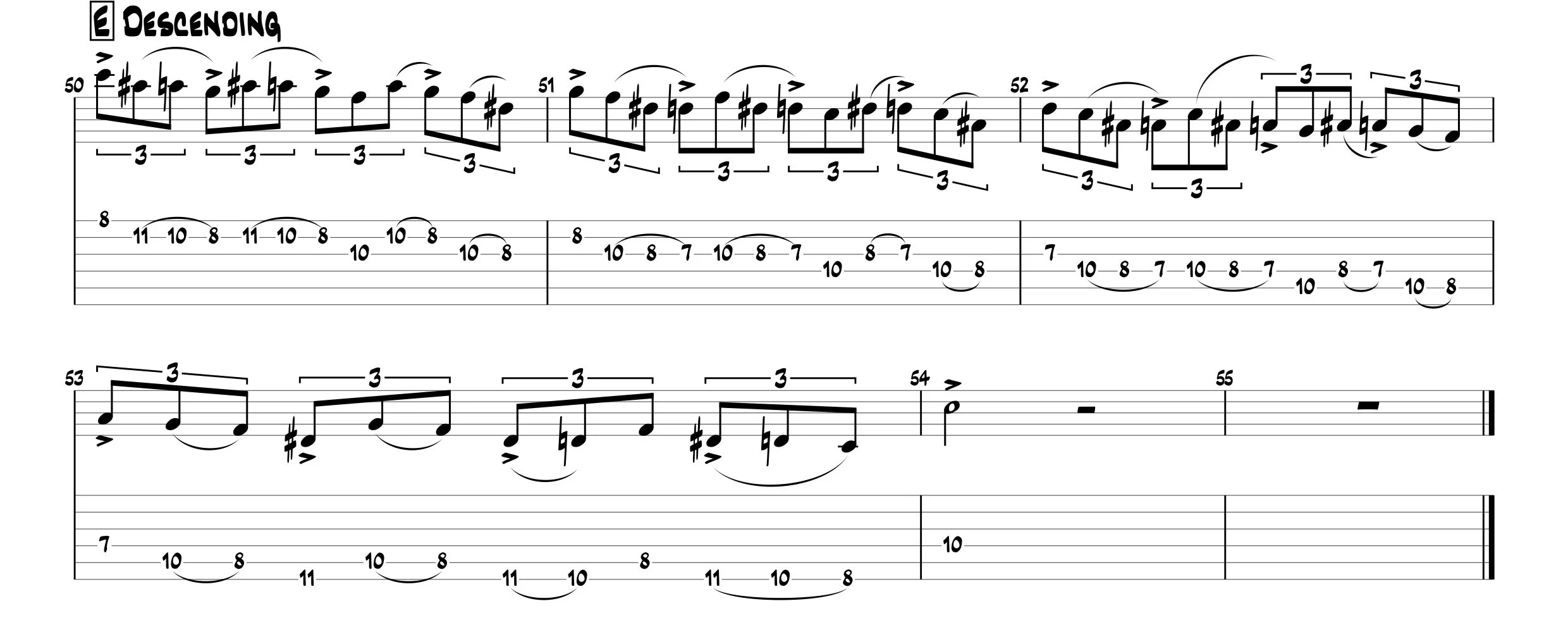Sequences are a great way of generating melodic material that has logic and that listeners can latch onto consciously or subconsciously.
Musical sequences are much like numerical sequences. If you see this sequence of numbers 1 3 5 7, 3 5 7 9, 5 7 9 11 you can probably easily identify the next 4 numbers……..
7,9,11,13.
In music we can sequence a melodic device. In the examples I’ve provided we mostly use the C Minor Pentatonic Scale: 1 b3 4 5 b7. A very easy sequence would be - 1 b3 4, b3 4 5, 4 5 b7, 5 b7 1, b7 1 b3 and then we’re back to where we started.
An additional concept that I’ve used in the examples for this lesson is Rhythmic Displacement. The reason for this is that if we have a 3 note sequence like the one I just illustrated, it can sound pretty pedestrian to play that 3 note sequence using a rhythmic grouping of 3 also. So we would use a rhythmic grouping of 2 or 4. The result is that the accents travel around the note grouping. With a rhythmic grouping of 2 the accents would fall on notes 1, 3 and 2 of the note grouping before repeating rather than always falling on note 1 as they would if the rhythmic grouping matched the note grouping. This makes for much more interesting & musical phrases.
I have another more expansive lesson on this topic here.
So let’s look at an example of a sequence that we’ll all know - Layla by Derek and the Dominos (Eric Clapton). Below you can hear the famous Layla riff and then see a subsequent example of how this could be sequenced through the entire minor pentatonic scale.
It’s important to note at this point that you’d be somewhat over-egging the pudding were you to use a sequence through an entire scale in any real world musical setting. It is prudent however to practice sequences through an entire scale as you’ll then have that sequence ‘under your fingers’ and will be able to use fragments of it to create melodic phrases.
Below are 5 sequences both ascending and descending. A - D use the C Minor Pentatonic Scale and E uses the C Dorian Scale. Pay attention to where the accents fall (on each beat) this is crucial to achieving the effect of rhythmic displacement mentioned earlier.
You can hear audio examples of all 5 at the bottom of this page. You can also download the Guitar Pro File here should you wish.
All of the resources on my website are made for free and they do take considerable time & effort.
If you’ve enjoyed this lesson then please do consider donating (no matter how little) as a means of support or you can Buy Me A Coffee here .
Alternatively you could buy my comprehensive yet very reasonably priced ($6.99) books on the CAGED System, Music Theory for Guitar and/or THE MUSIC THEORY MANUAL: BEYOND DIATONIC HARMONY via these links or in my Store at the top of this page where you can also read previews of all 3 books.
All of the resources on my website are made for free and they do take considerable time & effort.
If you’ve enjoyed this lesson then please do consider donating (no matter how little) as a means of support or you can Buy Me A Coffee here .
Alternatively you could buy my comprehensive yet very reasonably priced ($6.99) books on the CAGED System, Music Theory for Guitar and/or THE MUSIC THEORY MANUAL: BEYOND DIATONIC HARMONY via these links or in my Store at the top of this page where you can also read previews of all 3 books.
Thanks! James.





